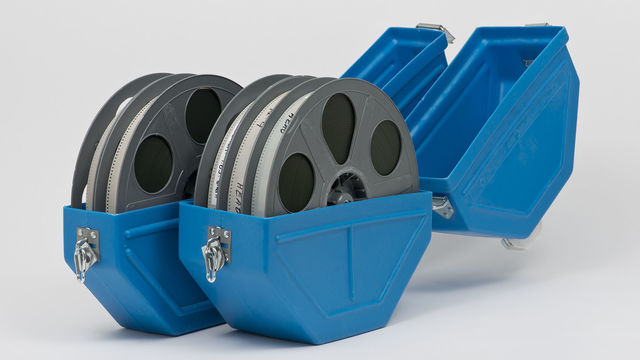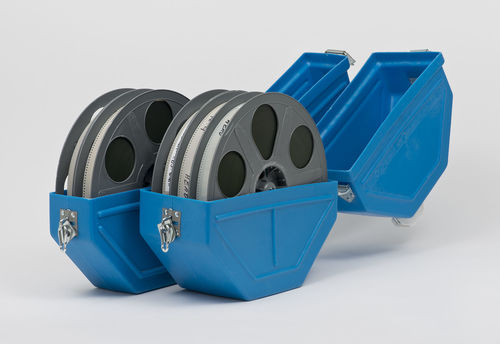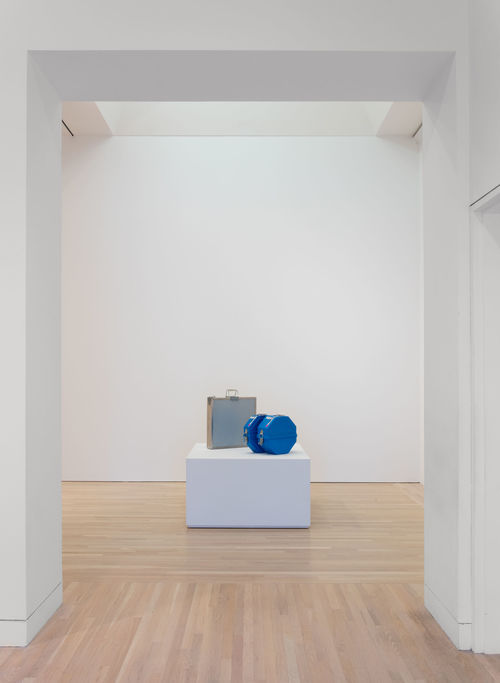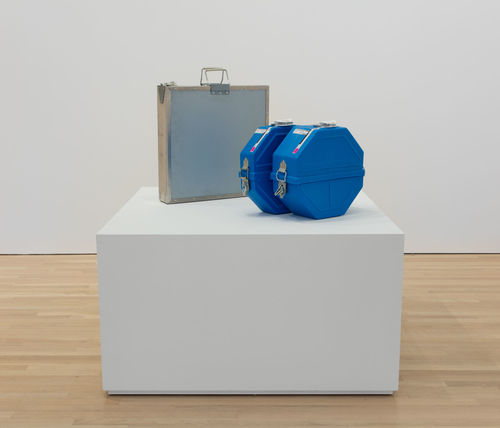
Margaret Honda
Margaret Honda’s films grow out of a sculptural practice that privileges a material relationship to the medium above any narrative or representational concerns. Honda aims to reconsider the standards of film production protocols, often rearranging the order in which things are done or utilizing only certain aspects of the production chain. The film canisters on view contain two of her works: Color Correction (2015) and Spectrum Reverse Spectrum (2014).
Photochemical film and the industrial processes by which it is made, developed, and printed are fast disappearing as the entertainment industry continues to embrace digital production and projection. Honda’s work with these materials and processes at this moment in time is part of an ongoing interest in how objects are made and presented. Rather than fixate on the loss of a dying medium, she makes the material basis of photochemical film the content of Color Correction and Spectrum Reverse Spectrum, having conceived of the two works as objects rather than images. In some senses this gesture renders the material viewable on nonfilmic terms, considering its presence in a dormant state as one worth reflecting on in place of the projections that are otherwise withheld.
The subject of Spectrum Reverse Spectrum and Color Correction is color. Both are cameraless films that have neither frames nor imagery to speak of. Both were made by exposing print stock to colored light in a film printer. The developed film consists exclusively of colors that make up the visible light spectrum. As its title suggests, Spectrum Reverse Spectrum is a palindrome. When projected, it features a uniform field of color that moves gradually through the light spectrum, from violet to red and back to violet—the gradient plotted to shift over 2,500 feet (21 minutes), the length of a standard reel of 70mm film.
Color Correction was made using the color-correction timing tapes for an unknown Hollywood feature. After a film is edited, a timing tape is made. The timing tape ensures consistency of color throughout an entire film by controlling the film printer’s red, blue, and green light valves. Adjusting the valves produces the specific colors needed to correct each shot. For Color Correction, the film stock was exposed to light whose color was determined by the instructions embedded in the timing tapes. The result is a succession of hues, each on-screen for a duration determined by the shots of a commercial film, the identity of which will forever remain unknown.
Both works were processed directly on print stock. There is no negative, meaning that the works are unique prints, making their materiality all the more conspicuous. By displaying them in such a manner, Honda acknowledges the films’ objecthood, giving as much weight to this quality as to what is projected on-screen. The only time the films will not be on view is when they are being screened in the Billy Wilder Theater on three occasions throughout the run of the exhibition.







